Are you looking for a healthy diet to help you get fit during pregnancy?
You’re in the right place.
After reading this post, you’ll learn
- What you need to include to achieve a healthy meal plan during pregnancy,
- How to combine diet and exercise to stay fit during your pregnancy, and
- How to create a weekly pregnancy meal plan for yourself.
Let’s get started.
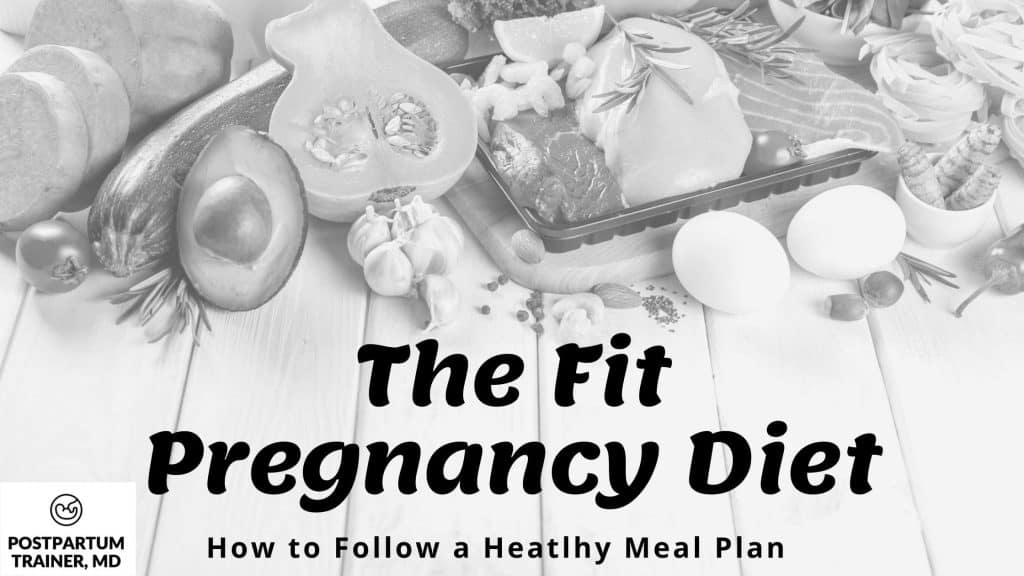
The Fit Pregnancy Diet – What You Need To Include In Your Meal Plan
If your goal is to get fit or to maintain your fitness during pregnancy, then your diet should be a high priority.
Why?
Because pregnancy is associated with:
- Rapid development and growth of your baby, and
- Rapid changes to the physiology of your body
In order for both of these things to occur, you must provide your body with the nutrients it needs on a daily basis.
I know that “eating healthy” is easier said than done, but I have a few tips that will help you get started.
First and foremost, there are three things you must optimize to have a healthy pregnancy diet.
They are:
- Adequate Protein Intake,
- Healthy Fat Intake, and
- An abundance of micronutrients such as iron and folate
Let’s go over each step one by one.
#1 You Must Get Enough Protein
Protein is one of the three macronutrients that your body needs to function optimally. In fact, many people would argue that protein is the most important macronutrient of all.
Protein is particularly important during pregnancy because:
- Your baby will require approximately 1000g of protein throughout the entire pregnancy to support its growth and development- it relies on you to provide it!
- Secondly, protein is the nutrient responsible for the development and maintenance of lean muscle tissue. If you exercise regularly, then making sure that you eat enough protein is critical.
So how much protein should you consume?
At least 0.5 grams of protein per pound of body weight.
Should you use protein powder supplements to help you get there? It depends. I go over this topic in more detail in Protein Powder In Pregnancy [Everything You Need To Know].
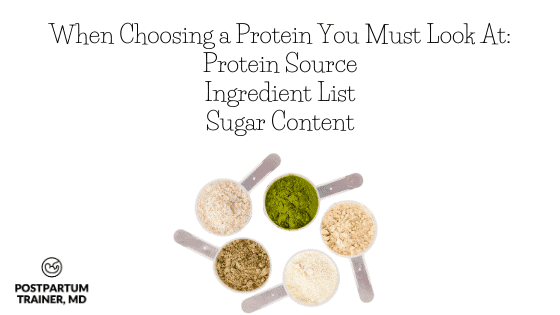
#2 You Must Eat These Types of Fat
Next, let’s talk about fat. Unfortunately, fat has gotten a bad reputation.
But the truth is… fat isn’t bad for you.
In fact, fat is an essential nutrient that your body needs to survive. It plays an important role in hormone production, thermal insulation, and energy production.
With that said, it is important to differentiate which fats are helpful, and which ones are harmful.
There are four types
- Saturated Fat
- Poly-unsaturated Fat
- Mono-unsaturated Fat
- Trans Fat
Let’s go over which ones you should eat, and which ones you should avoid.
The Healthiest Fats You Should Consume During Pregnancy
The healthiest type of fat is unsaturated fat. Specifically, Omega 3 fatty acids are the healthiest. Research shows that they may play an important role in cardiovascular and brain health.
Omega 3 fatty acids can be found in:
- Fatty fish, like salmon
- Walnuts
- Chia seeds
- Flax seeds
Other sources of healthy unsaturated fats include nuts, seeds, and avocados.
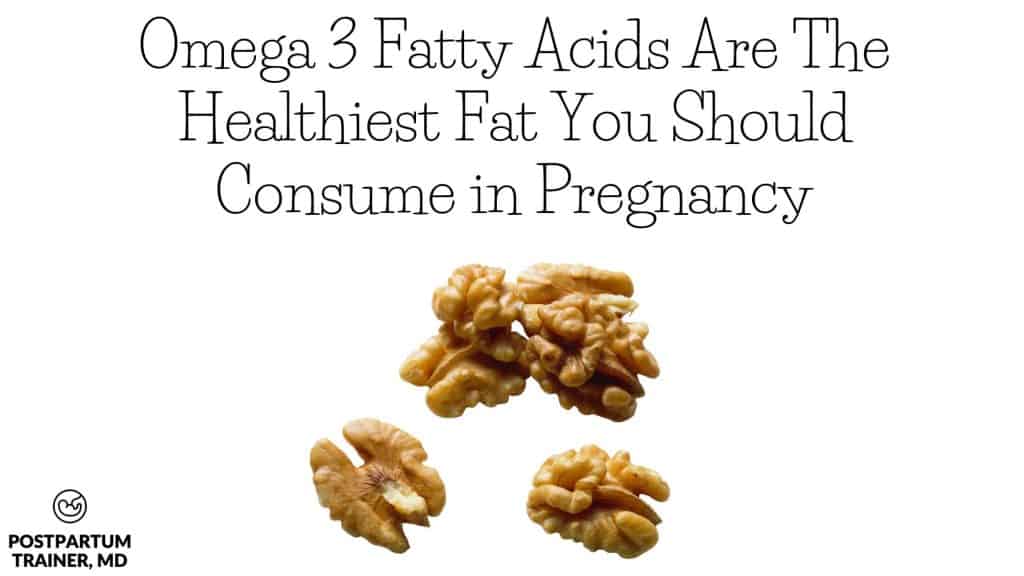
The Unhealthiest Fats You Should Avoid During Pregnancy
On the other hand, trans fats should be avoided at all costs – regardless of whether or not you are pregnant.
These can be found in commercial peanut butter and other packaged snacks labeled as “hydrogenated oils.’
Always read the ingredient label just to be sure!
There is no current recommendation on how much fat you should consume during pregnancy. But it is safe to say you should try to consume some healthy fats on a daily basis.
#3 You Must Consume These Micronutrients
The third most important aspect of a fit pregnancy diet is micronutrient intake. Micronutrients refer to the various vitamins and minerals present in the food you eat.
To have a healthy pregnancy diet, there are a few nutrients you must pay close attention to.
Specifically, you need to consume:
Iron
Iron is necessary for red blood cell production and the prevention of anemia. Unfortunately, iron deficiency anemia is fairly common in pregnancy.
If you are iron deficient, then an iron supplement will be beneficial for you throughout your pregnancy.
Otherwise, be sure to eat iron-rich foods on a daily basis.
These include:
- Lentils
- Spinach
- Chicken
- Eggs
- Broccoli
Also, here’s a pro tip: Consuming Vitamin C rich foods (such as Kiwi, Oranges, Strawberries) together with iron will enhance its absorption!
30 mg/day should be sufficient.
Folate
Folate is the most critical micro-nutrient for you to consume during early pregnancy.
This is one of the major reasons why we prescribe prenatal vitamins in the first place. Folate is necessary for the development of the fetal neural tube.
If you are taking a prenatal vitamin, (which you should be during early pregnancy), then you should be covered. The minimum recommendation is 400mcg/day.
Otherwise, here are some foods high in Folate.
- Legumes
- Spinach
- Citrus fruits
- Chia Seeds
- Flax Seeds
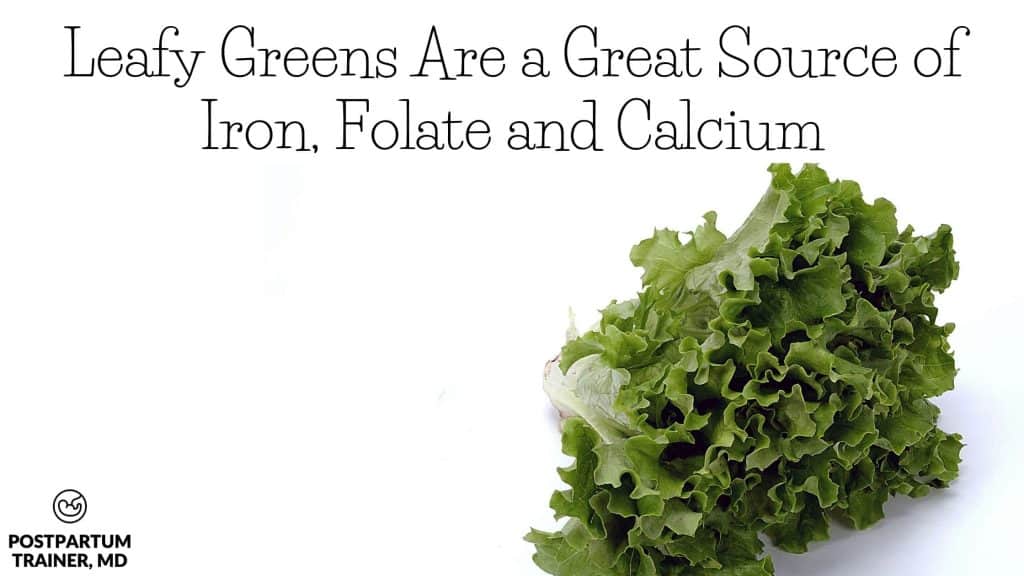
*Be sure to check with your doctor how much folic acid you should be taking – some women are at higher risk and may need 4mg/day*
Calcium
As you probably already know, calcium is important for maintaining strong bones and it is also important in developing your baby’s skeletal system.
Calcium is also crucial for the prevention of osteoporosis later in life – something that could begin happening as early as your 30’s.
Foods that are high in calcium include:
- Milk
- Yogurt
- Broccoli
- Spinach
- Chickpeas
1000mg of elemental calcium per day should be sufficient.
Vitamin D
Vitamin D is another key nutrient that the vast majority of people do not get enough of.
We can actually synthesize our own Vitamin D whenever we expose our skin to direct sunlight. Unfortunately, this process is inefficient because:
- we aren’t exposed to sunlight long enough to make sufficient levels, and
- depending on where you live, the sun’s rays may not be strong enough to induce Vitamin D synthesis
In addition, there are no great food sources that contain natural levels of Vitamin D. You can find it in dairy products and cereals that have been fortified with the nutrient.
Just to be safe, I recommend that you get a prenatal vitamin that has at least 400 IU of Vitamin D3 – cholecalciferol.
Iodine
Thankfully, iodine deficiency is not very common in the United States. However, inadequate intake is becoming more common due to a decrease in the consumption of iodized salt.
Iodine is necessary for thyroid function and in the prevention of fetal hypothyroidism.
The thing is, prenatal vitamins don’t usually contain this micronutrient.
The easiest way to get a sufficient amount of iodine is to add a small amount of iodized salt to one of your meals.
The World Health Organization (WHO) recommends 250 mcg of iodine per day.
—
So as you can see, you can easily create a meal plan centered around all of the foods I just mentioned here.
What is a good meal plan for a pregnant woman?
So now let’s talk about a weekly pregnancy meal plan you could follow that incorporates all of these factors.
I will give one example of each meal that you could eat on a daily basis.
Here is…
The Postpartum Trainer’s Fit Pregnancy Meal Plan
Meal 1
- 1/2 cup of Rolled Oatmeal
- 1/4 cup of Granola
- 2 Tbsp of Chia Seeds
- 1/3 cup of Blueberries
- 2 Egg Whites (or scrambled tofu)
This simple breakfast meal provides you with protein, fiber, omega 3 fatty acids, carbohydrates, and other vitamins/minerals.
Plus, it will keep you satiated!
If you aren’t a big breakfast person – you can start the day with a small serving of fresh fruit.
Snack 1
- Carrots and Hummus
This simple snack will provide you with high levels of several micronutrients while curbing your hunger. Keep in mind that hummus is made from chickpeas – which contains high levels of calcium and folate!
Meal 2
- 1/2 cup of Quinoa
- 4 ounces of Chicken/Salmon/or Lentils
- 1 cup of Steamed Broccoli
This is an easy, go-to lunch that satisfies several healthy points in your pregnancy diet plan.
The quinoa is full of vitamins/minerals, fiber, and protein, the meat/legume is also full of iron and protein, and the broccoli is full of other micronutrients.
You can substitute any of these items for an equivalent, nutrient-rich food.
Snack 2
- A handful of Walnuts and Pistachios
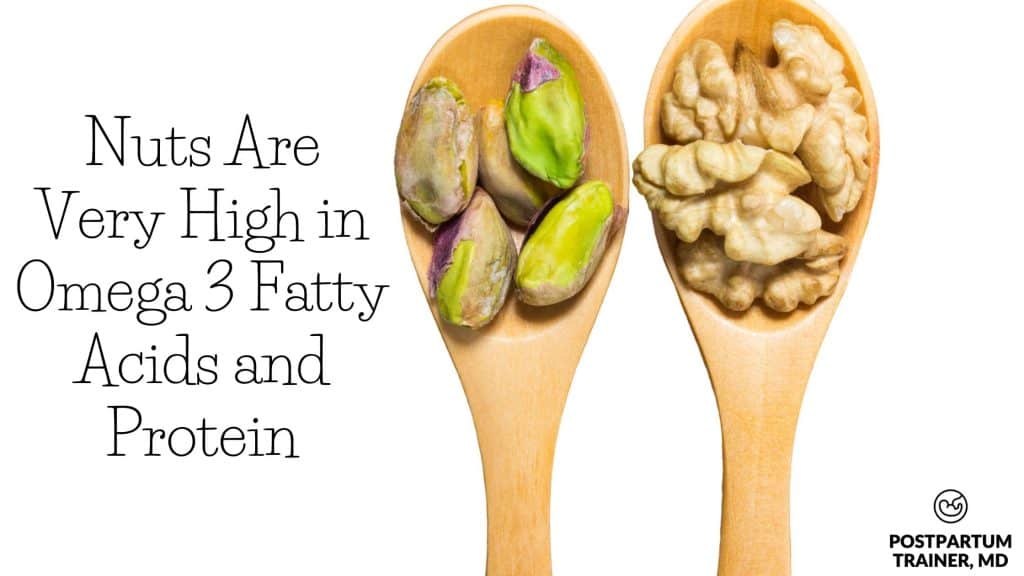
This is one of the best snacks you can carry with you at all times. Nuts are very satiating, and they tend to be high in omega 3 fatty acids and protein.
A little salt is okay to meet your iodine requirements.
Meal 3
- 1 cup of Kale
- 4 ounces of Chicken/Salmon/Edamame
- 2 other Vegetables of your choice
- 1 Fruit of your choice
Your last meal of the day can be a salad. If done correctly, salads are a great way to keep satiation high, and caloric intake low, depending on the type of ingredients you decide to add.
There are endless possibilities. Just make sure to keep the dressing to a minimum.
How To Follow The PPT’s Fit pregnancy meal plan
So these are the staple food groups that should make up your clean eating meal plan to stay fit during pregnancy.
You can easily mix and match different foods to vary up the diet on a weekly basis.
But that’s not the best part.
The best part is.. you don’t have to be perfect!
If you follow this meal plan 80% of the time, you will see great results. That means that you can indulge in foods you are craving 20% of the time and still maintain a great level of fitness.
So I challenge you to make a plan.
Go to the grocery store once a week and purchase the food groups mentioned above, to have on a regular basis.
If this is too much food for you, feel free to eliminate one or both of the snacks. If that’s still too much food, decrease the serving sizes by a small amount.
The most important things are
- to make sure you are consuming something from each of the major categories mentioned above, and
- you stay consistent 80% of the time
There are a few other things I want to mention.
Don’t Undereat- You Must Consume This Many Calories Per Day
Another important thing that you must realize is that you don’t want to undereat throughout your pregnancy.
Your baby and your body need a sufficient number of calories to maintain optimal health. This is especially true if you are maintaining an exercise regimen.
Once you reach the second trimester, you should increase your caloric intake by ~350 calories per day.
In the third trimester, you should increase your caloric intake by ~450 calories per day.
That means that your total caloric intake should be approximately 2000-2300 calories per day during the third trimester.
The pregnancy meal plan above should have you covered.
The opposite is also true.
It is important to know that you are not eating for two! Your baby is tiny relative to you. It does not need that many calories.
That is why we recommend increasing your caloric intake by 350-450 calories, max.
Overconsumption of calories is the major cause of excessive weight gain in pregnancy.
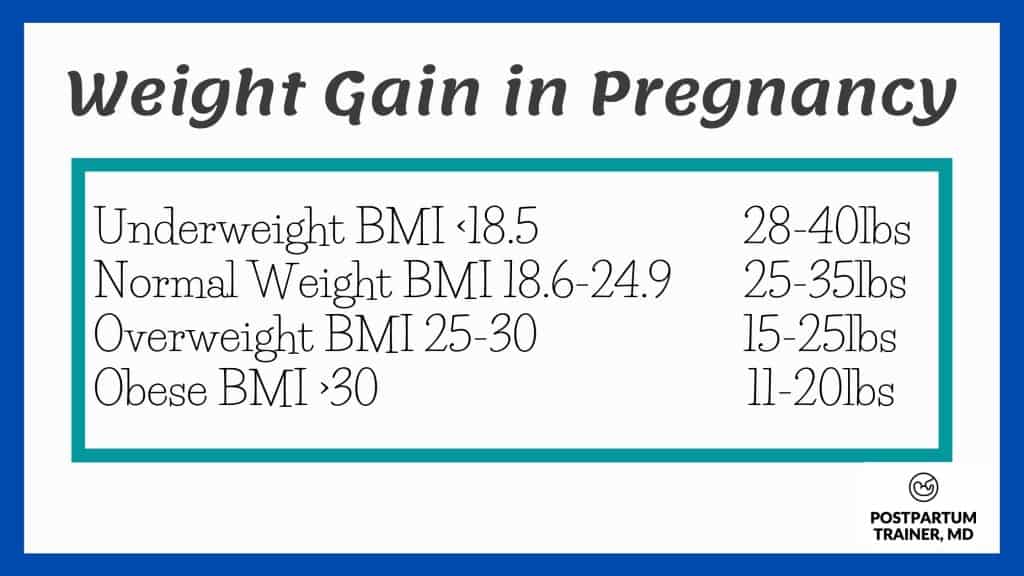
Benefits Of Following A Healthy Meal Plan During Pregnancy
Now, let’s talk about why you would want to follow a healthy diet while pregnant.
Aside from staying lean and optimizing progress from exercise, following a fit pregnancy diet can:
- Help you get back to your pre-pregnancy weight faster
- Help you maintain a normal rate of weight gain
- Increase your chances of having a belly only pregnancy
- Improve your energy
- Maximize the health of your baby as nutrients are passed through the placenta
Cravings will happen. Your body is eager for calories. We crave high-calorie foods because, from an evolutionary standpoint, these foods are likely to contain the nutrients we need.
As I said above, it is okay to eat these foods 20% of the time.
As long as you stick to the plan most of the time, you will do great!
Related Questions
Can you safely lose fat while pregnant?
Many women want to know how they can lose weight during pregnancy. Believe it or not, we highly discourage you to lose fat/weight during pregnancy.
This can lead to complications such as undernutrition, and intra-uterine growth restriction of your baby.
Instead, we recommend that you stick to the appropriate weight gain in pregnancy guidelines.
Can you get in shape while pregnant?
You can definitely get in shape while pregnant. Doing so requires three things:
- A Healthy Pregnancy Diet Plan
- A Pregnancy Exercise Plan
- Adequate Sleep and Recovery
The first point is covered in this article. The second and third points are covered in How To Get In Shape While Pregnant- A Step-By-Step Guide.
How do I stay lean during pregnancy?
What if you are already fit? How can you stay lean/fit during pregnancy?
If you are already lean/fit, staying that way isn’t difficult. It is important that you maintain a healthy lifestyle that involves staying active, and following an appropriate pregnancy diet plan.
Check out my posts on Walking During Pregnancy, and Strength Training During Pregnancy to get started.
What is not safe to eat during pregnancy?
The last thing I want to talk about are foods you should not eat during pregnancy. I will just list these out and discuss them in more detail in a future post.
They are:
- High mercury fish (shark, tuna, swordfish, mackerel)
- Raw eggs
- Raw seafood (sushi)
- Uncooked deli meats
- Unpasteurized milk or dairy products
Other Safety tips
- Always wash produce thoroughly.
- Only consume meat and fish that has been fully cooked.
- Don’t consume unpasteurized dairy products.
Final Words On The Fit Pregnancy Diet
Eating healthy during pregnancy doesn’t have to be complicated.
As long as you follow the three principles laid out in this post, you should be able to maintain a healthy level of leanness.
As always, be sure to work with your doctor to develop a personalized pregnancy diet and exercise plan that works for you.
Now I want to hear from you.
What struggles have you had with nutrition during pregnancy?
Comment below and let me know!
Related Posts On Maintaining A Healthy Pregnancy
- How To Get In Shape While Pregnant [How To Do It Safely]
- Protein Powder In Pregnancy [Do You Need To Take It?]
- The Belly Only Pregnancy Guide [Advice From An OBGYN]
- How to Gain Minimal Weight in Pregnancy
Get Four Free Workouts To Help Strengthen Your Pelvic Floor & Heal Your Mommy Tummy!

Brittany Robles, MD, MPH, CPT
Brittany Robles is a full-time OBGYN physician, a NASM certified trainer, and a prenatal and postnatal fitness specialist. She holds a Master of Public Health degree in maternal health with a special interest in exercise and nutrition. She is also the co-author of The White Coat Trainer. Learn more about her here.
Sharing is Caring – Send This To A Mom In Need!

The struggles I have been dealing since day one is nausea and vomiting. I was told this was only in the first trimester, but I’m sitting at 6 months still experiencing it. I used to workout daily prior to my pregnancy, but I have been barely able to workout after the first two months of pregnancy. I am now sitting at working out only once if not twice a week and I feel like a heifer. I am no longer strong and nothing really seems appetizing to eat. I have only been able to maintain carbs such as pretzels or potatoes. Everything else seems to nauseate me.
Hi Melissa,
Thank you so much for your comment.
Nausea and vomiting is definitely more common in the first trimester however some women can experience it throughout the entire pregnancy.
Try your best to eat small frequent meals throughout the day and be sure you are staying hydrated. Hydration is one of the most important things for your entire gestation.
I understand how frustrating it can be to not be able to workout but try to do what you can. 1-2x per week is better than nothing! Even if that is 5-15 minutes a day!
Best of luck.